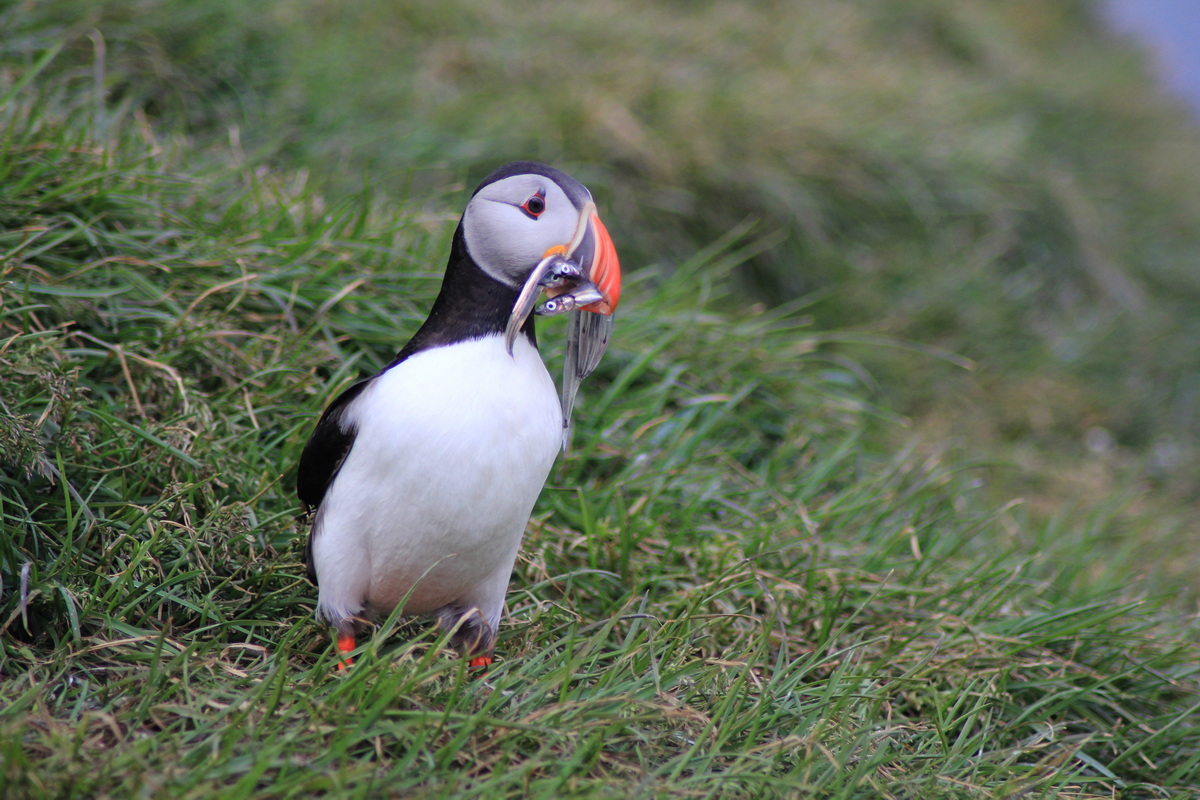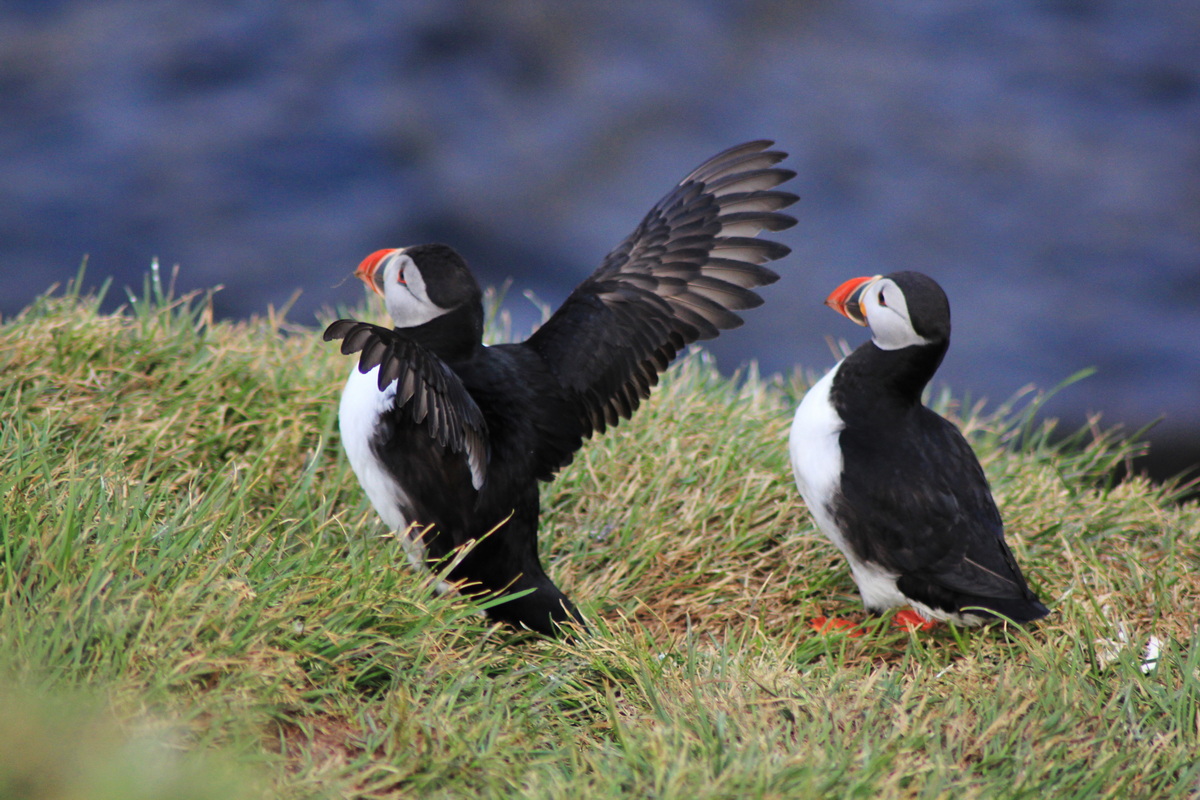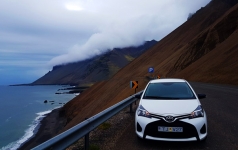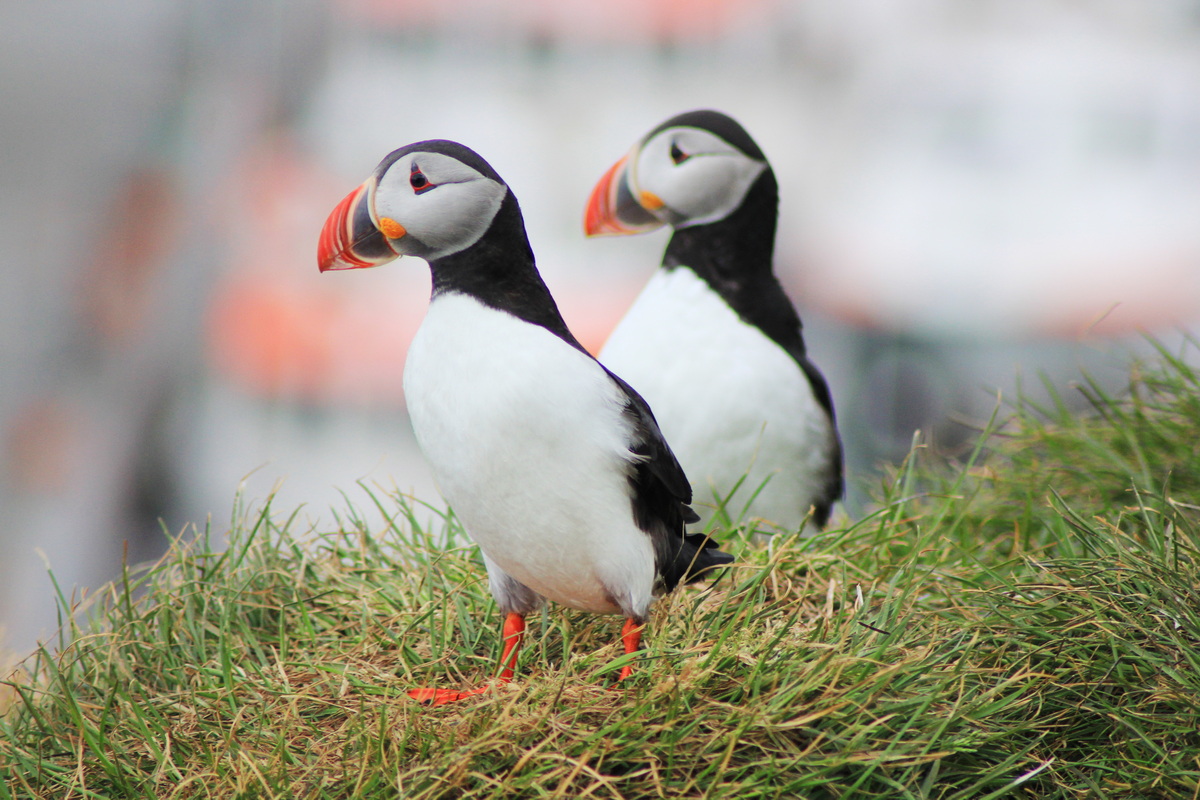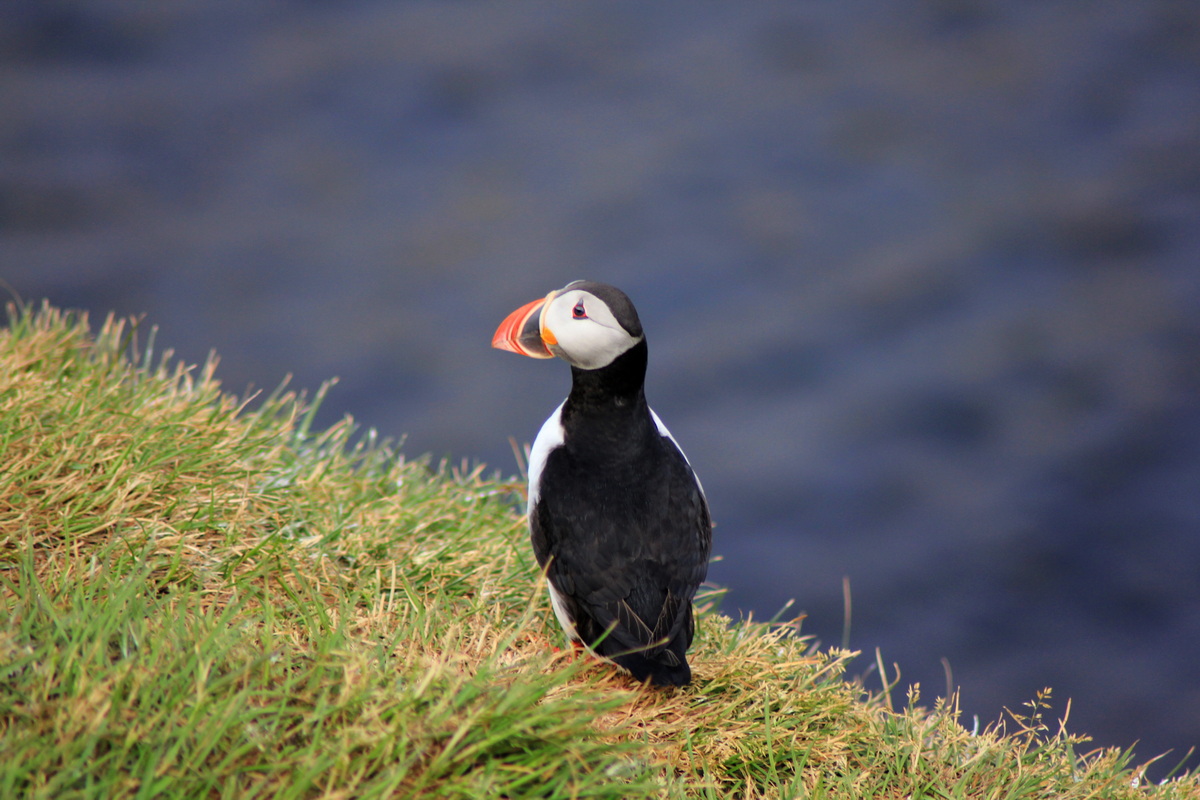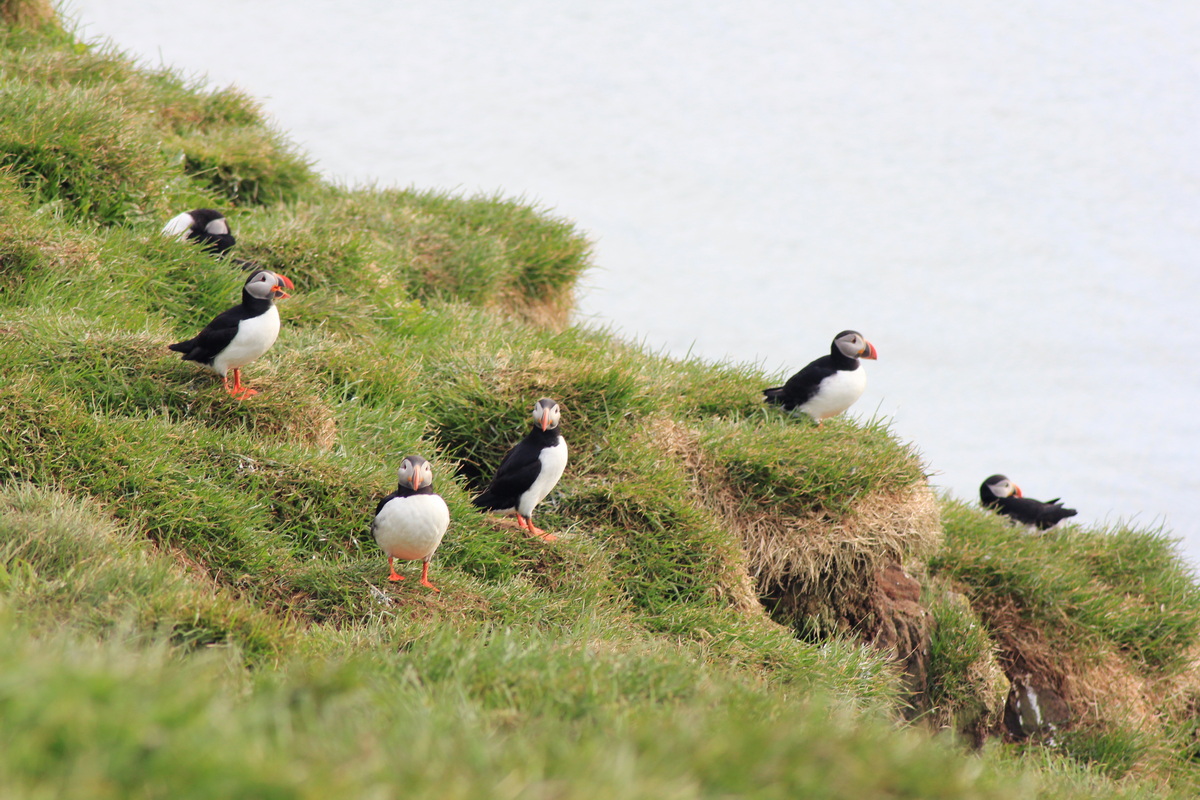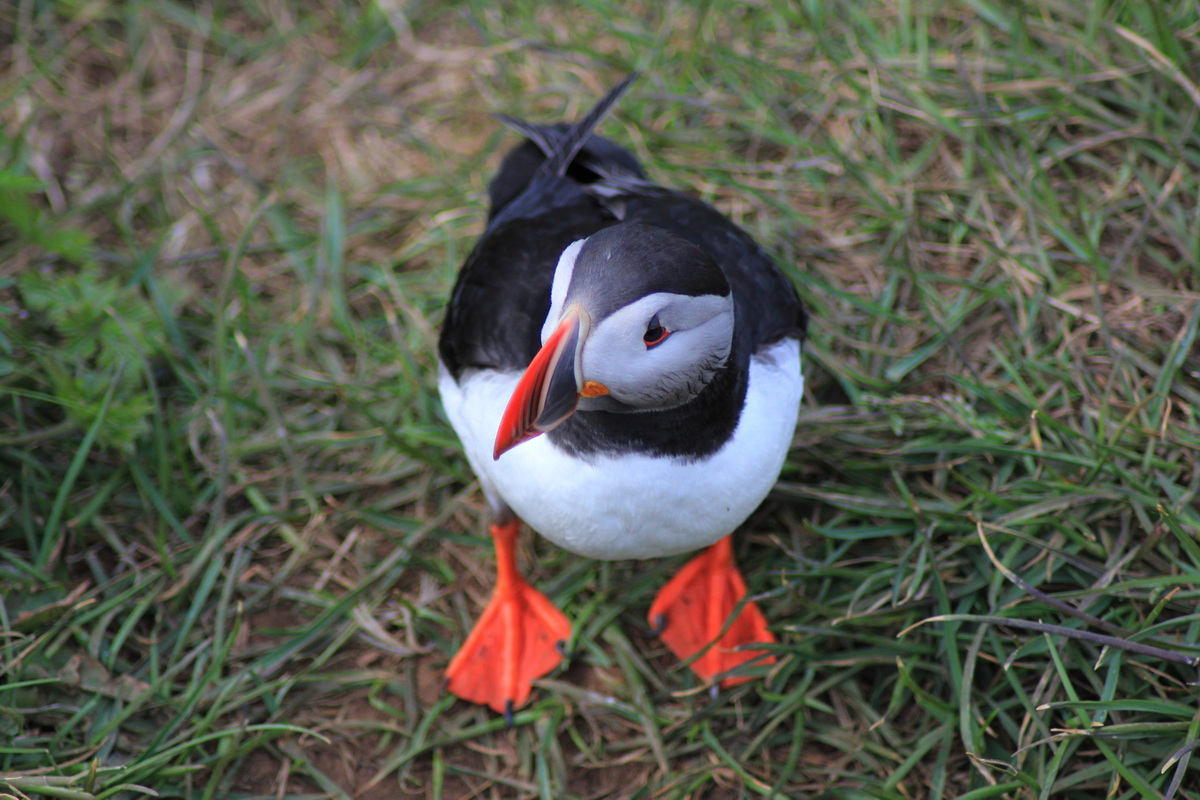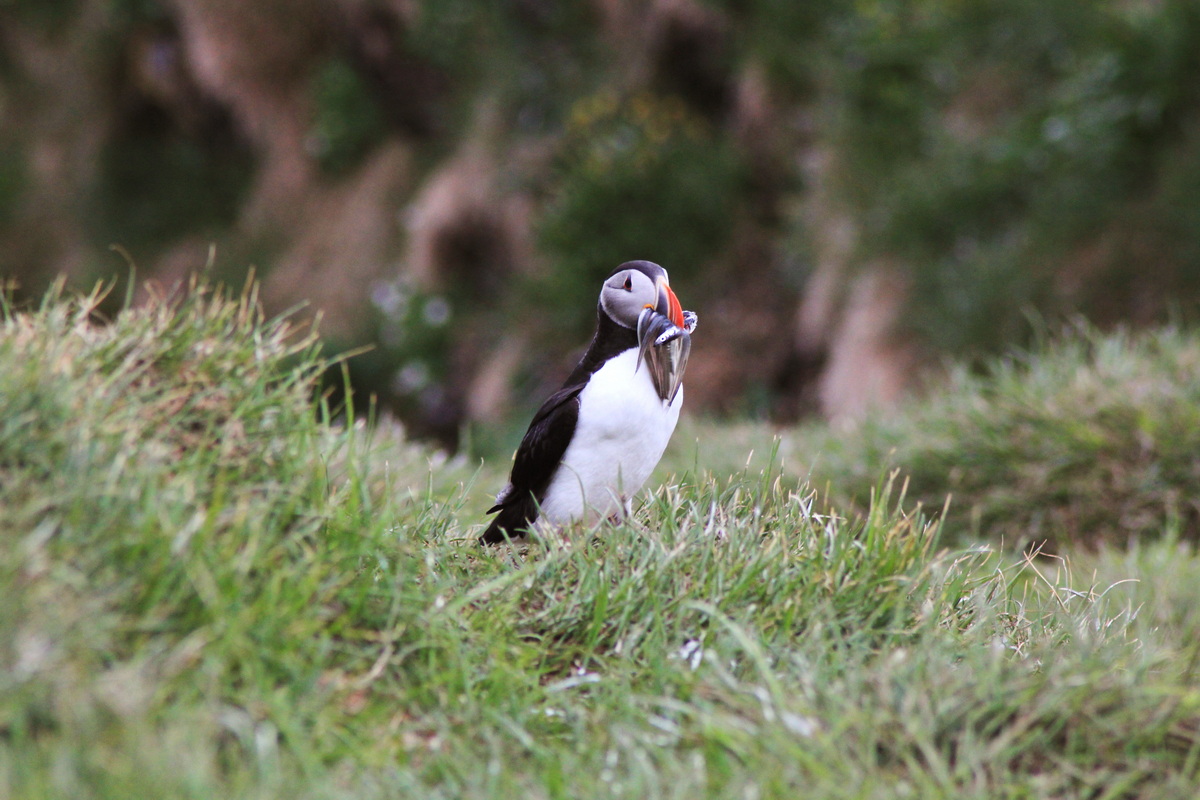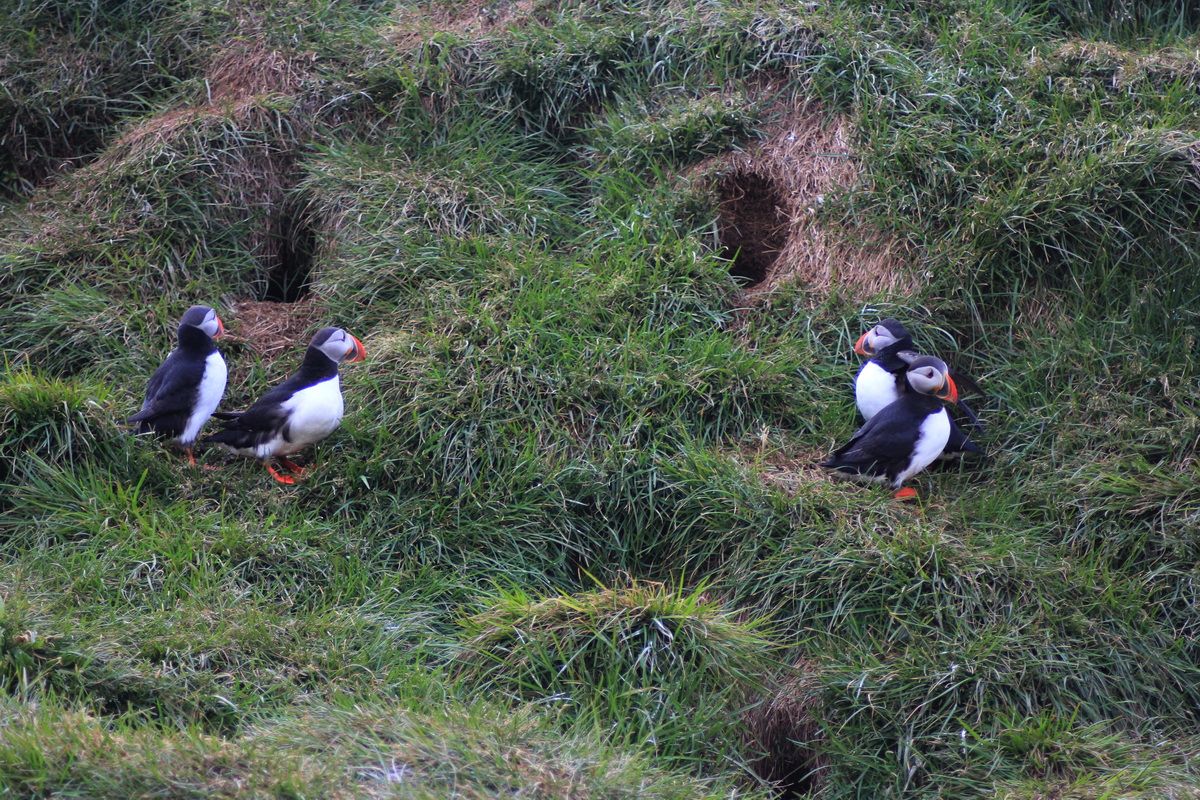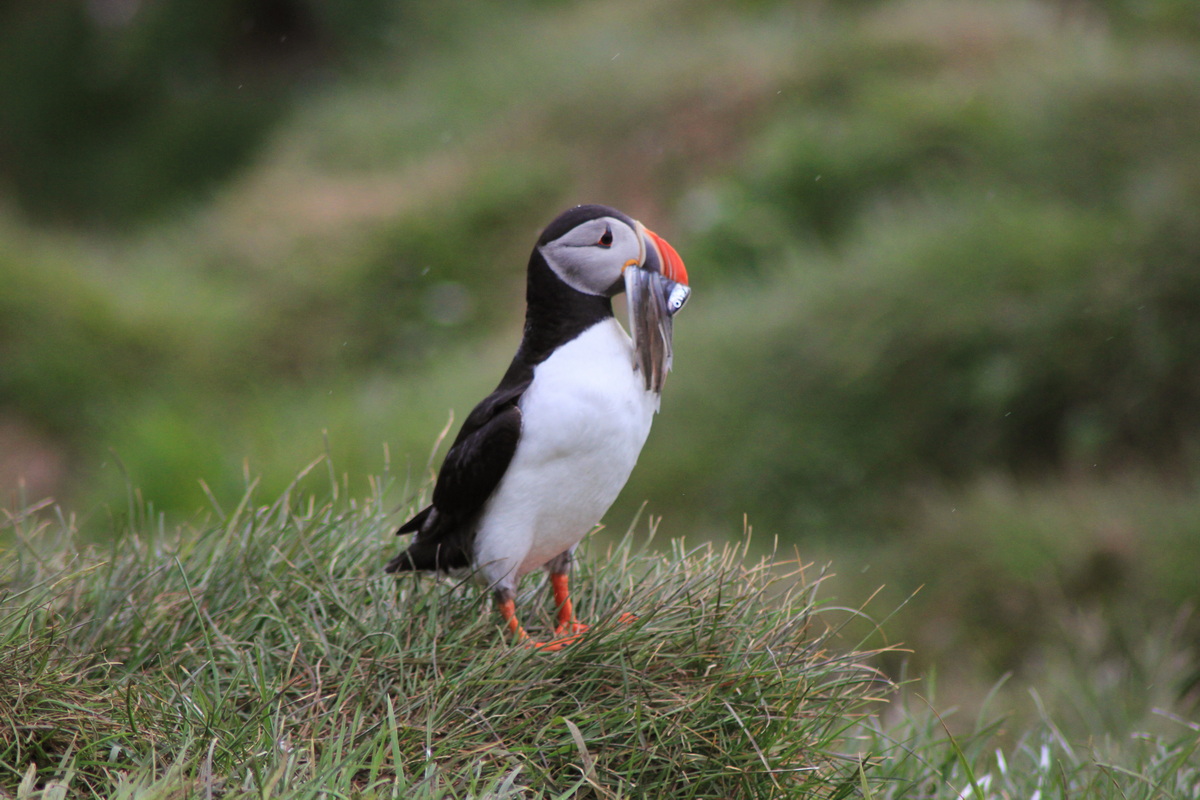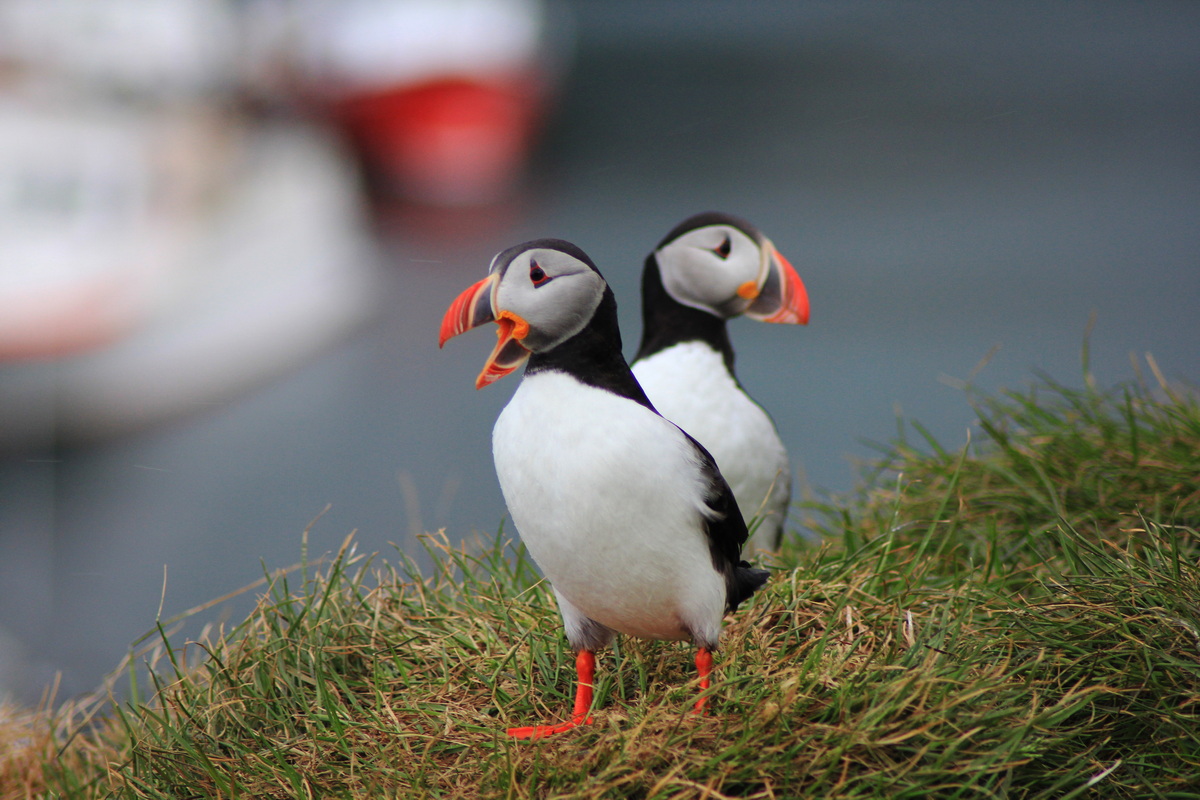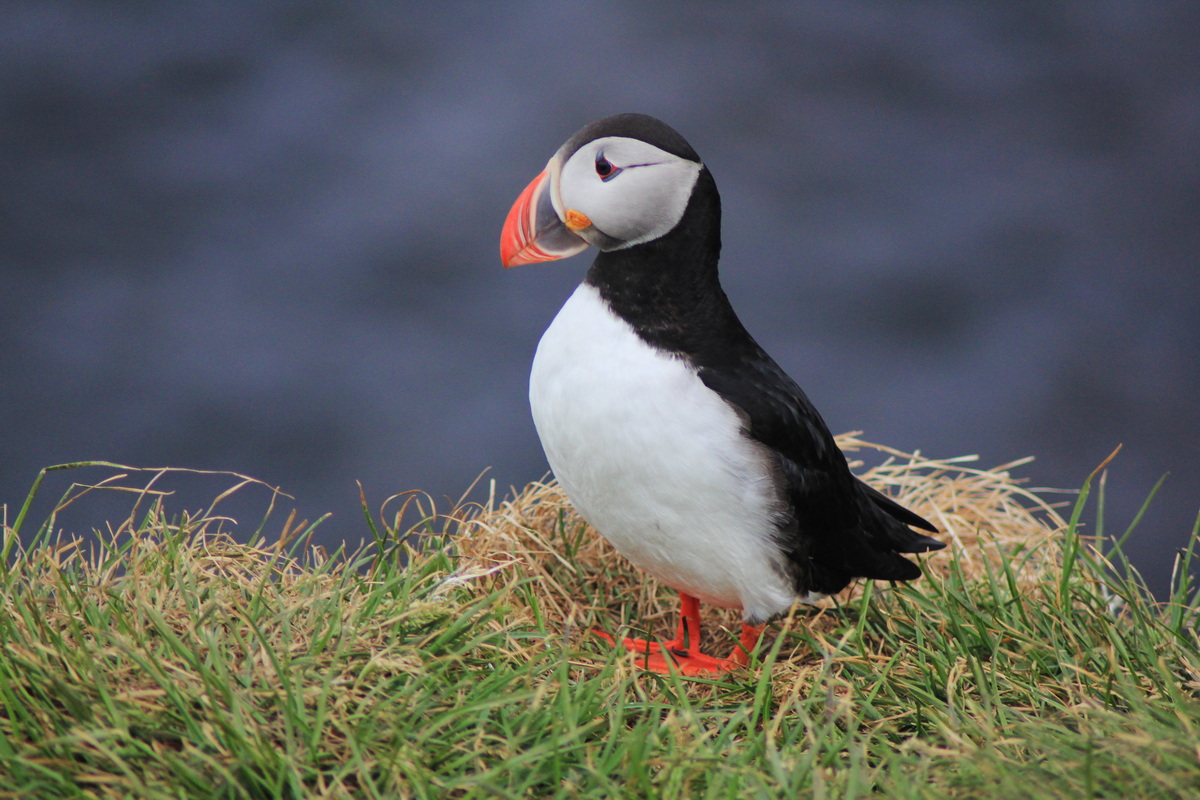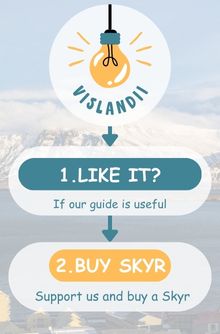Puffins are the most beautiful birds of the North Atlantic. And Iceland is their favorite island. But you can drive around it and not find any. Where to see puffins in Iceland? Or maybe it's more important when?
There is an Icelandic joke:
– Where in Iceland can you always see puffins?
– To Leygavegur.
Leygavegur is the main shopping street of Reykjavik. Puffins are the main element of the design of storefronts. They also occupy most of the shelves of souvenir shops. You can buy puffin mugs, T-shirts, key chains, magnets, beer openers, children's books, scrapbooks, and even stuffed puffins to hang on the wall, perhaps along with other hunting trophies. But let's be honest, nothing can replace a puffin "captured" by a camera with your own hands, preferably when it swims out of the ocean with a beak full of small silver fish.
That's why many people go to Iceland.
The lucky ones will see them on the first day. And someone will be unlucky - and he will not meet a single one during the two weeks of the trip. Puffins in Iceland are found even along the main tourist routes, but you need to know where to look for them and how to find them.
Of course, you can go on a whale watching tour, and at the same time see puffins, but if you do not like tours, but prefer to travel on your own in a rented car, then our advice will undoubtedly be useful to you
And, of course, a lot depends on WHEN you visit the island of fire and ice.
First, you need to plan your travel dates
Puffins in Iceland appear as early as April, but to be sure that you will see them, it is best to go between mid-May and mid-August. These three months are the peak of the tourist season, and at the same time, the time when puffins in Iceland lay eggs and raise offspring. In fact, each pair lays only one egg. And if you're lucky, and neither the pomeranians nor the Arctic foxes will eat their offspring, they will raise one chick. And then they will fly with him into the open ocean.
And since this is the peak season, then you should take care of renting a car in advance and use our advice
Car rental in Iceland - tips and tricks
Rent a car in Iceland - how to choose proper car, what is the cost of renting a car, is it worth taking full insurance, where you can drive a car, and where you have t...
Because from mid-August until the next breeding season, puffins are just in the middle of the ocean. They don't need any land. They are brilliant swimmers, they feel much better in the water than on land or in the air. During the breeding season, when they are on land, it is also worth looking at the clock. The best chance to see these birds up close is in the morning and evening. They fish during the day and can fly far out to sea.
Secondly, you need to know where to look.
The rocky cliffs are home to seagulls and boobies. Puffins need grassy slopes in which they can dig holes. Yes, instead of building nests on ledges of rocks, as befits seabirds, puffins dig holes. And they prefer to live in grassy meadows on the tops of cliffs that descend steeply to the ocean. They compete here for space with the ubiquitous sheep, who gnaw the grass with philosophical calmness, not paying attention to the bird life swarming under their hooves.
It is quite difficult to notice a puffin in the grass. That's why it's always easier to start by watching the sea. If you see a flock of small black birds bobbing on the waves near a grassy cliff, this is a signal to reach for binoculars or a camera with a good, long-focus lens. Also it's easier to spot a puffin in flight. The flight of a puffin is very characteristic, it is easiest to describe it with the word "desperate". Puffins have short wings that work well as fins in the water, but look pathetic in the air. They flutter them to rise a few meters with the greatest effort, then fall a little and, again flailing the air, fly towards a hole dug in the meadow, where a hungry partner is waiting for them, hatching an egg, or a screaming chick.
Third, you must have a plan.
While puffins in Iceland can be seen in every region, if we hope to take beautiful photos of cute "Arctic parrots" somewhere between waterfalls and a volcano, we may miscalculate. The trip should be organized so that you know where you can meet puffins, and have reserved time for this. The easiest way to make this is during the preparation, when you discuss the details of the trip with friends or your guide. This allows you to change your trip in advance in order to spend more time in places where seabirds often visit.
Where can I find puffins in Iceland? We offer 7 reliable, proven locations:
1. Vestmannaeyar - Vestmannaeyar
The archipelago off the southern coast of Iceland, at the level of the famous Eyjafjallokudl volcano, is home to Europe's largest colony of puffins, numbering more than a million pairs. Already sailing by ferry from Iceland to Heimaey, the largest island in the archipelago, we see lonely islets with single houses on grassy cliffs. These are hunting lodges that are inhabited during the short period when hunting puffins is allowed (April 15-25, just before the breeding season). In the summer puffins they raise young chicks and they have nothing to fear except voracious seagulls and inattentive sheep.
How can you hunt such beautiful birds? The best answer to this question was given by an Icelander to the famous British chef Gordon Ramsay: "How to hunt? Use the net!"
If you have less murderous intentions towards puffins, then on Heimaei you can drive up to the rocky narrowing of the island called Storhefdi. There is a wooden observation booth with windows overlooking a large colony of puffins. You can take pictures of birds without attracting the attention of feathered flyers.
2. Westfjords - Latrabjarg (Westfjords, Latrabjarg)
Iceland's westernmost peninsula is a 400-meter-high rock that stretches for 14 kilometers. You can get there by road No. 612, covered with gravel for 36 kilometers, from the picturesque sunken ship Garðar BA64, the symbol of the Vestfjords. The bird cliffs of Latrabjarg are one of the most charming natural places in Iceland. Because in addition to thousands of puffins, we will meet other sea birds. Getting there without a 4x4 car is quite problematic, but in good weather, about an hour's drive is enough from the end of the paved road.
3. Husavik
The city became famous thanks to the film Eurovision. The Story of the Fire Saga group is the best place in Iceland for photo whale safari. Husavik Bay is famous for small striped whales and sperm whales, and even a blue whale, the largest creature in the world, can be found here. Boats with tourists sail past the island of an almost elliptical shape, the name of which says a lot about the birds inhabiting it. Because "lundi" means "puffin" in Icelandic, and "ey" means "island" in Scandinavian. Therefore, during cruises, except for whales, you can often look at puffins, although, of course, there is no chance to see them climbing rocks. At the height of the "Island of Puffins", the Icelandic shores are covered with grass that is pleasant for these birds, and if you are driving along road No. 86 from Husavik towards the Asbirgi Canyon, it is worth turning into a small parking lot behind the campsite with the charming name 66.12 North (which is a reference to the latitude at which it is located) and there on the seaside cliffs, on the shelves covered with thin grass, we will see small colonies of puffins.
4. Grimsey
Further north lies Grimsey Island, right on the Arctic Circle. Local puffins are highly appreciated in Icelandic cuisine. The hunting season is not limited by the authorities, because unlike in the south and west of Iceland, the bird population is still at a high level.
5. The Eastern fjords. Borgarfjordur eystri
An hour's drive north of Egilsstadir, the number 94 road leads to a small peninsula populated exclusively by puffins. For ornithologists, a short hiking trail has been built here - actually a staircase and a small wooden booth. Next to it is a small marina, and then a town, in the center of which is a hill called the "city of elves". This alone should encourage us to visit Borgarfjordur eystri. The puffins here are used to the presence of humans, and you can take really good photos documenting the "daily life" of the bird colony here. There is a parking lot and heated toilets nearby (even in summer, the weather can play a cruel joke on us, and we will bless the heated toilet).
6. Rainisfjara and Dirholey
The famous black beach near the village of Vik on the south coast of Iceland is a must-visit on any trip. Most tourists frantically take pictures of themselves against the backdrop of spectacular Dragon Teeth – sharp rocks sticking out of the ocean. And it is enough to raise your head to see the sloping meadows above the basalt pillars surrounding the rocky beach, from which puffins "fly out" every now and then in summer to dive into the ocean.
It is a little easier to see puffins a few kilometers to the west, on Cape Dirholey, next to a picturesque stone bridge splashed with sea waves. Next to the British artillery post, which remembers the times of the Second World War, several dozen pairs of puffins nest on a small hill. From time to time, they flash spectacularly over the black beach, like bullets fired from an invisible cannon.
7. Reykjavik
Puffins in the capital? Yes, yes, we know, on Laugavegur... But, fortunately, in the vicinity of Reykjavik, we can see these beautiful seabirds not only in the form of key chains or stuffed exhibits in the windows. The wide bay of Faxafloi, which stretches from the Reykjavik Peninsula to Snaifedlsnes, is frequented by humpback whales and killer whales. During tourist cruises, you can almost always count on the company of dolphins, and when the boats approach the island of Akurei and Lunday, we will see the rocks that are the home of the capital's puffins. Yes - the name Lunday (Island of Puffins) goes without saying. The Vikings did not come up with fancy names, and if something is called "vic", then it is the bay. If the word "rake" is in the name, it means that hot springs are "smoking" somewhere, "lundi" is a puffin.

